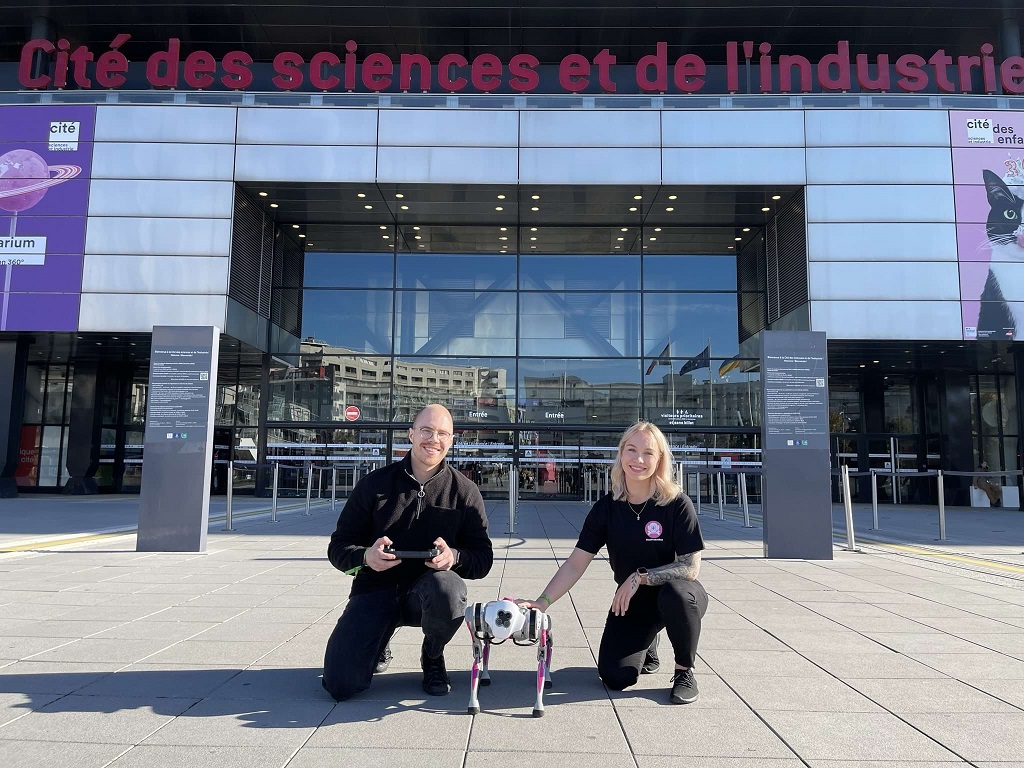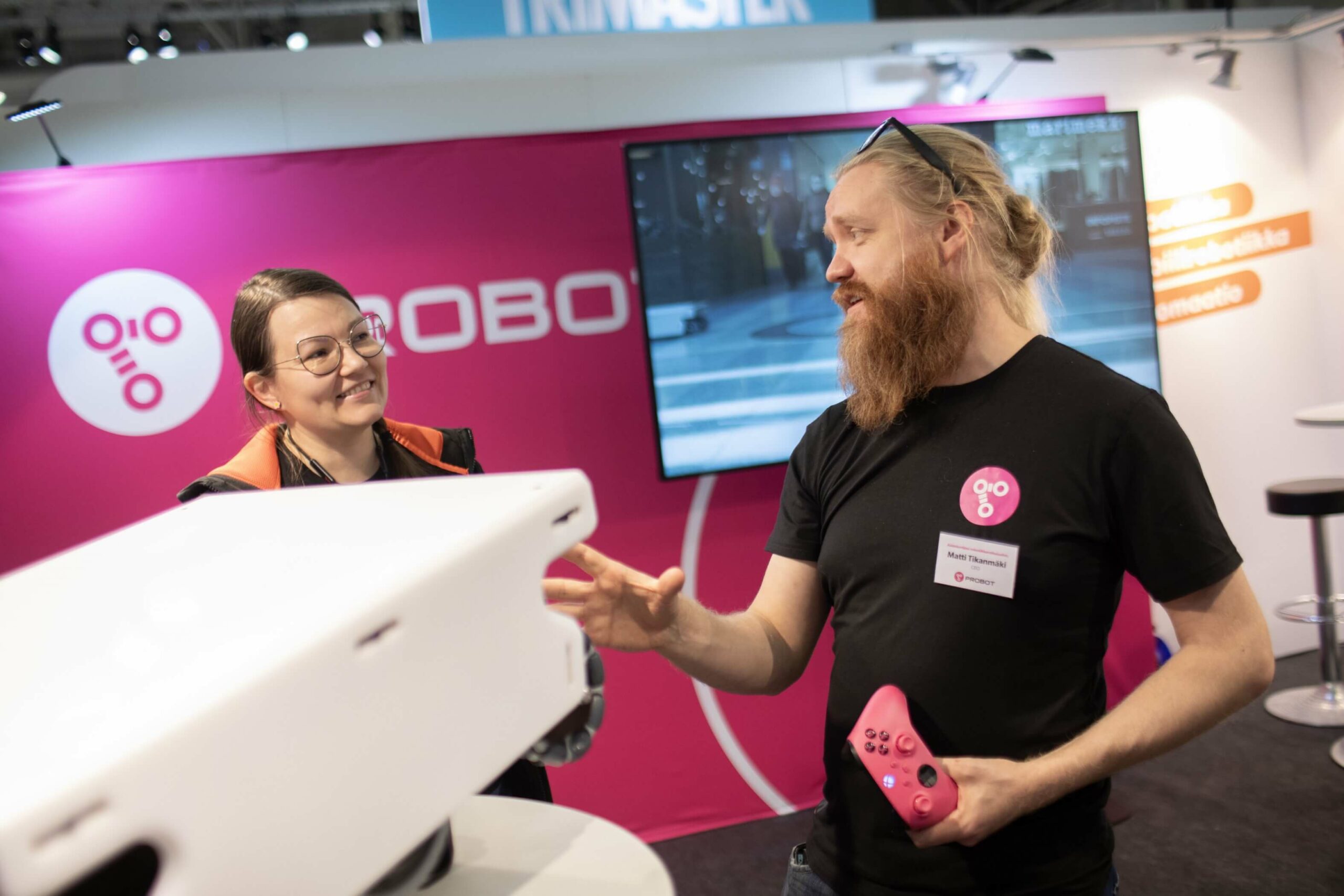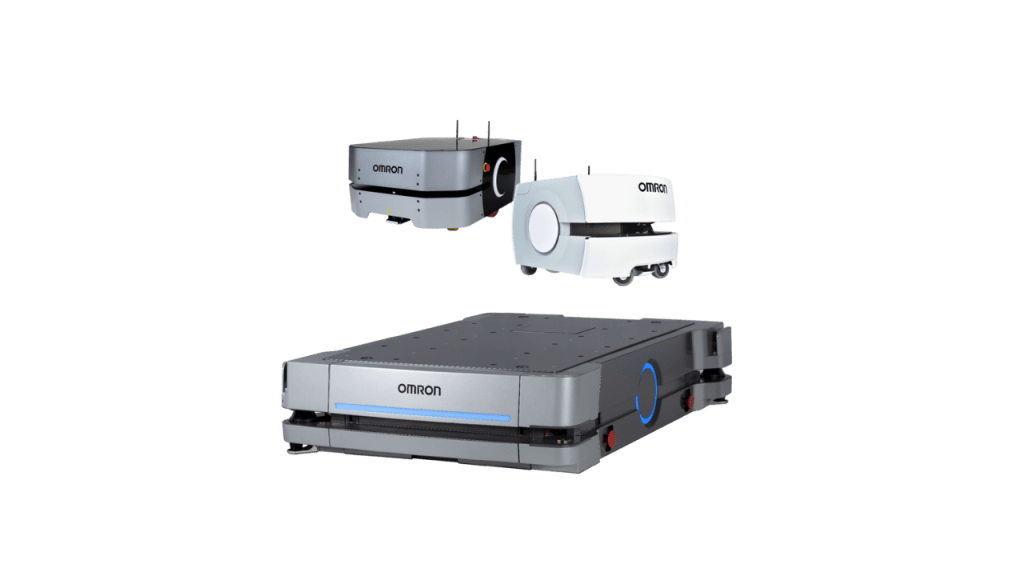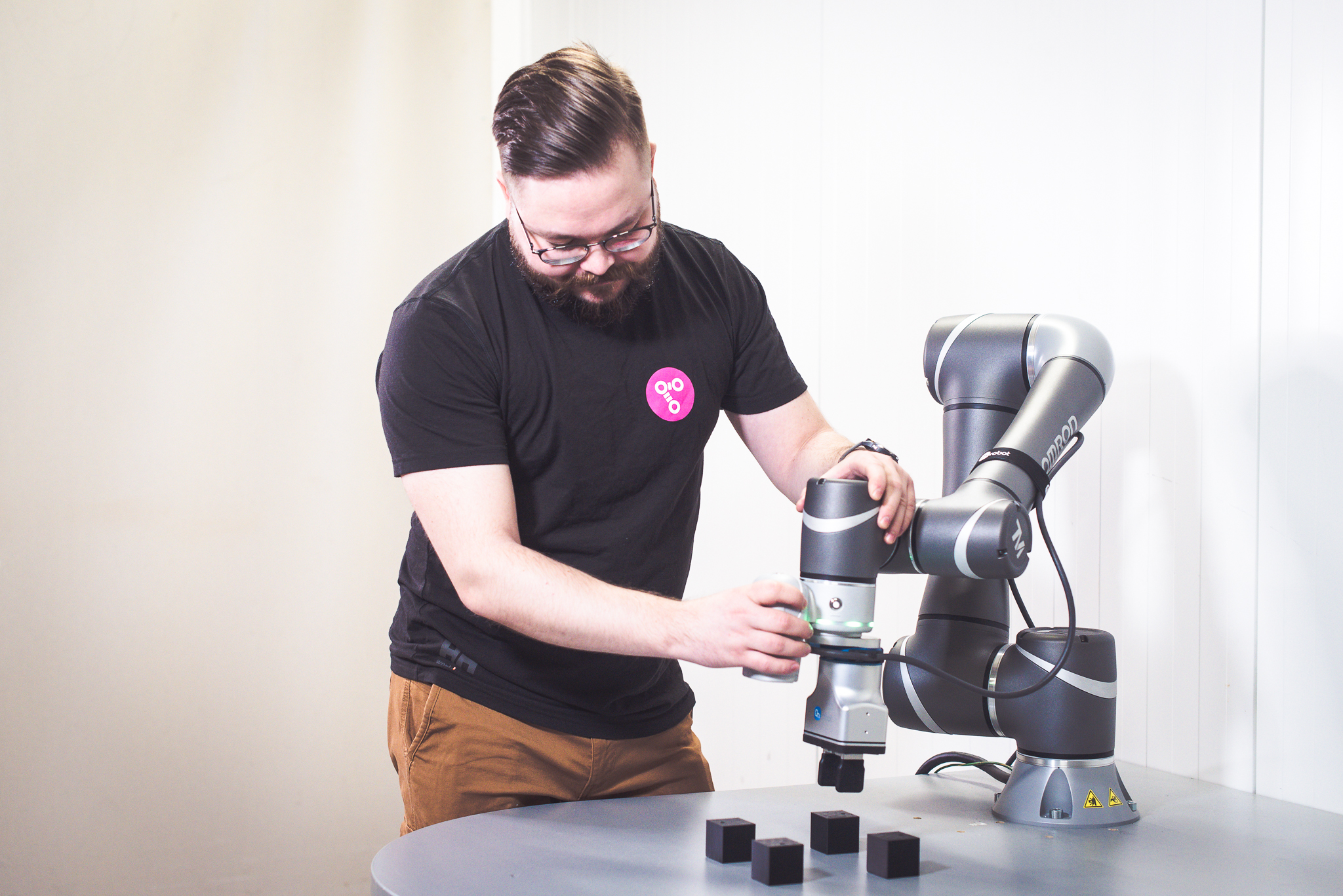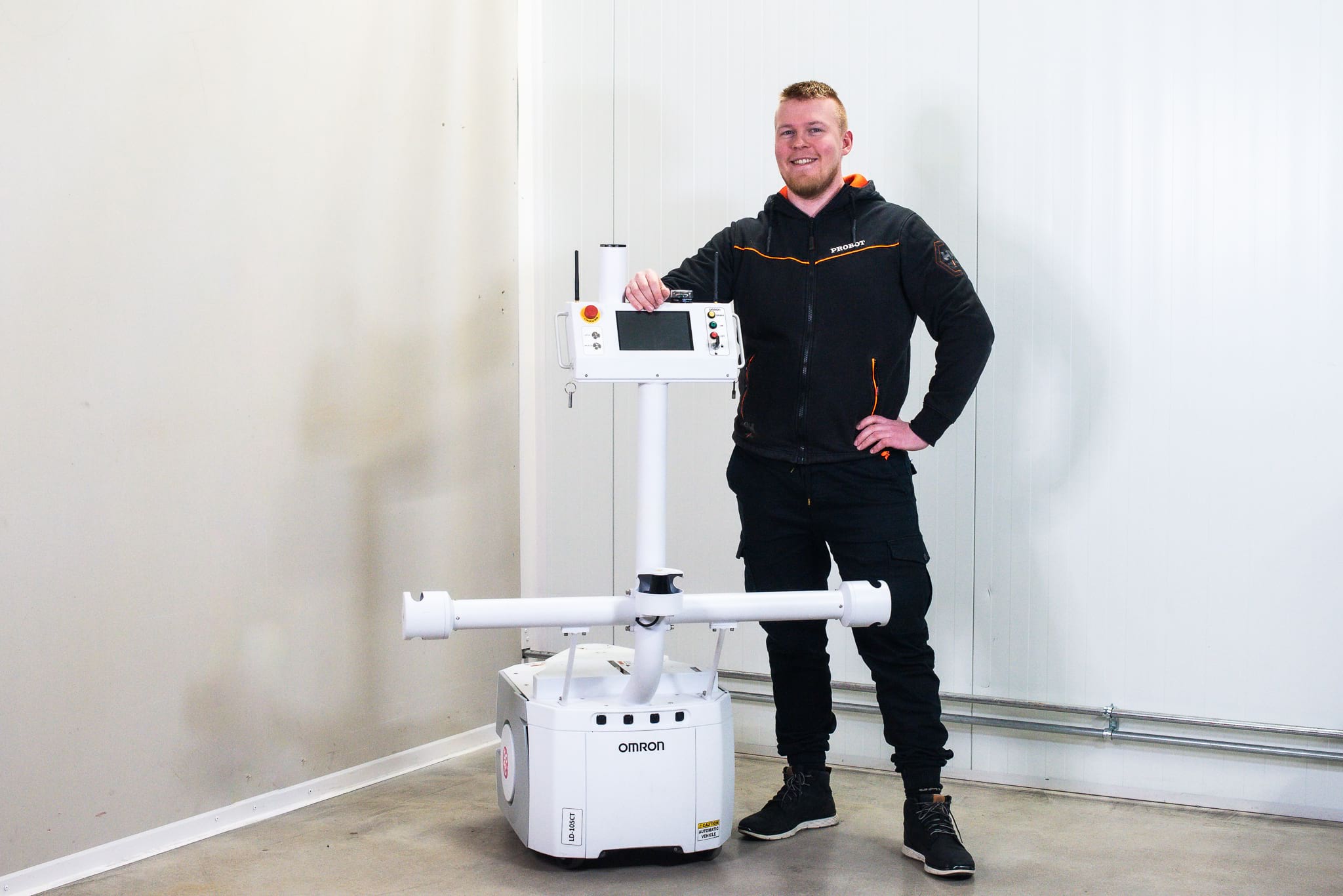How much does a robot dog cost? What is the robot dog used for? The attention-grabbing robot dog fascinates people, but it also naturally raises questions. We listed the 10 most frequently asked questions about robot dog – with answers, of course!
We operate as a distributor of Unitree robot dogs in Europe and have toured the world with our four-legged robots, from local stores and schools to Austrian robot competitions and fairs in Paris. Although the robot dog is a cute and funny invention, above all it is a versatile mobile robot. So what is the robot dog used for? And what does it cost? In this post, we provide answers to these and other frequently asked questions.
1. What is the Robot Dog Used For?
The robot dog’s advantage compared to other mobile robots is that it moves on four legs. The robot dog can also move, for example, on stairs and cross obstacles, unlike a mobile robot that moves on wheels.
- Industrial purposes include, for example, indoor and outdoor logistics. Certain models are capable of various logistics tasks carried out on uneven outdoor terrains, regardless of the weather. This is why a robot dog could be used for purposes such as temporary and automatic logistics in a disaster zone.
- Robot dogs can also be utilised in various guarding duties. Practical benefits for guarding fences and areas and patrolling the area include timed activities and collecting data from the environment.
- Equipping a robot dog with various sensors will enable its use on various inspection rounds, such as automatic, scheduled inspection walks. Inspection walks can be used to examine different features in the environment, such as gas levels and combustion gases.
- Robot dogs can also be used for various detection tasks. When searching an area, you can use the robot dog to locate specific targets in the chosen area and report their location. These tasks include detection tasks related to guarding or investigating an accident site.
From Unitree’s selection, you can find several robot dog models for different uses and, if needed, various accessories. For example, the Go1 Edu model equipped with a 2D laser scanner (in the pictures of this post) is perfectly suited to the needs of research and educational institutions. The slightly lighter version, Go1 Pro, is suitable for consumer use as well. On the other hand, the significantly tougher, so-called “master” B1 model is suitable for tasks organized in challenging outdoor terrains, e.g. for agriculture, industry, research and security patrols, searches, and public rescue operations.
2. How Fast Can the Robot Dog Move?
The maximum speed of the lightweight, only 12 kg Unitree Go1 Pro is 3.5 m/s or 12.6 km/h. Instead, the max speed of Unitree B1, which weighs about 50 kg, is 1.2 m/s, or 4.3 km/h. The maximum speed varies depending on the product model. The faster the dog moves, the flatter the terrain should be.
3. What is the Function of the Cameras in the Robot Dog’s Eyes?
The robot dog keeps track of its surroundings with a total of ten fisheye lens cameras. It utilises the cameras when tracking a human, for example. You can also follow the camera image via an app on your mobile phone or tablet.
Two of the cameras are located in the front, as the dog’s “eyes”. There are additional cameras on the robot dog’s chin, stomach and sides.
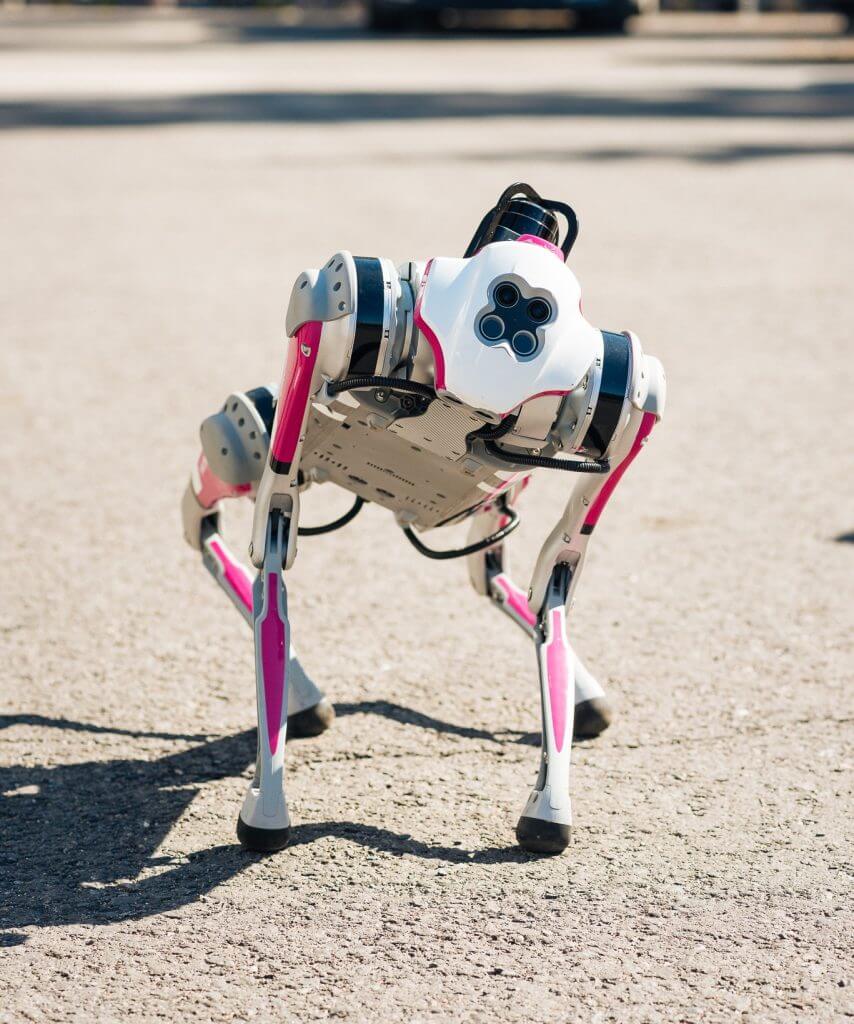
4. How Do You Control the Robot Dog?
You control the dog using a controller with a set of features. You can also set your phone or tablet in the middle of the controller, and use your screen to see what’s in the robot dog’s field of vision and where the dog is going. You can also program the dog to move on its own.
The best thing about the robot dog is that it’s so easy to use. Controlling the dog is comparable to playing Playstation or driving an RC car.
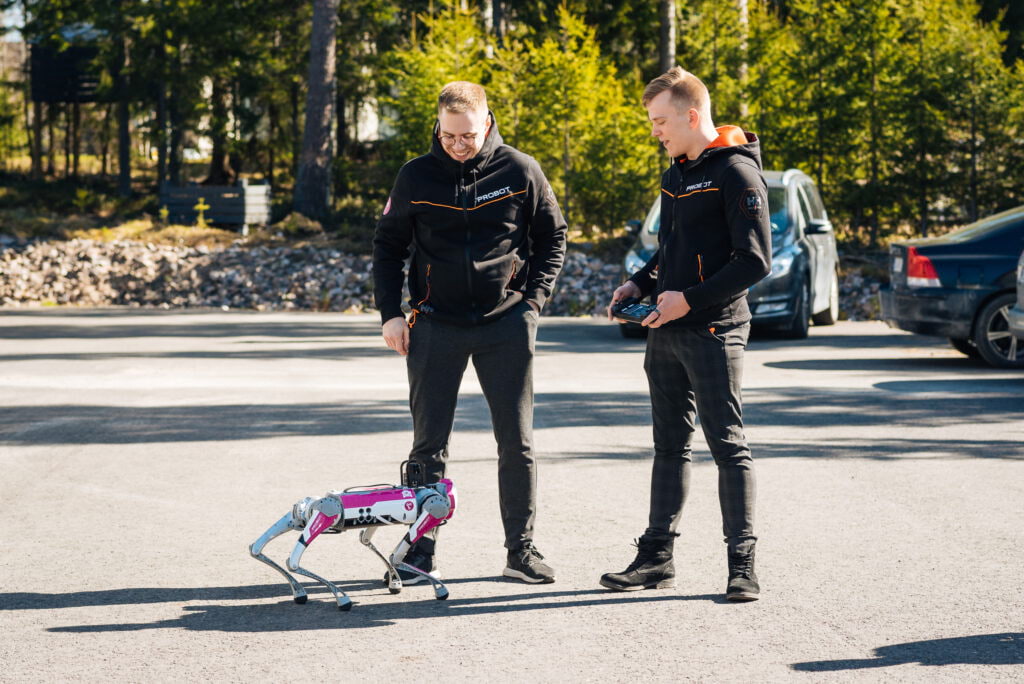
5. Can You Make the Robot Dog Follow a Human?
Yes! Thanks to its smart tracking system, the robot dog can accompany you on a run with you, for example. The tracking system uses a small device that comes with the dog, which can be attached to clothes, for example.
6. Can the Robot Dog Be Controlled Outside of the Human’s Field of Vision?
Yes. With the help of several cameras located in the robot dog and a separate application, controlling is possible even outside the line of sight.
7. How Do You Program the Robot Dog?
Yes! In addition to the dog’s default settings, you can program it for the purposes of your choice. You can program both high-level control that covers all robot movements and low-level control, such as joint movement and walking routines. The programming language is C++ and examples for programming are available on Github.
8. Does the Robot Dog Give a Paw?
In the same way that pet dogs are taught to give a paw, you can also “train” a robot dog to do so. So let’s start programming!
9. Does the Robot Dog Bark?
The robot dog doesn’t bark because it doesn’t have a speaker. However, the robot dog can be equipped with different speakers, so you can even make it sing!
10. How Much Does the Robot Dog Cost?
The prices of Unitree’s robot dogs start at approximately 5200 euros. The price is affected by the model of the dog and any additional parts.
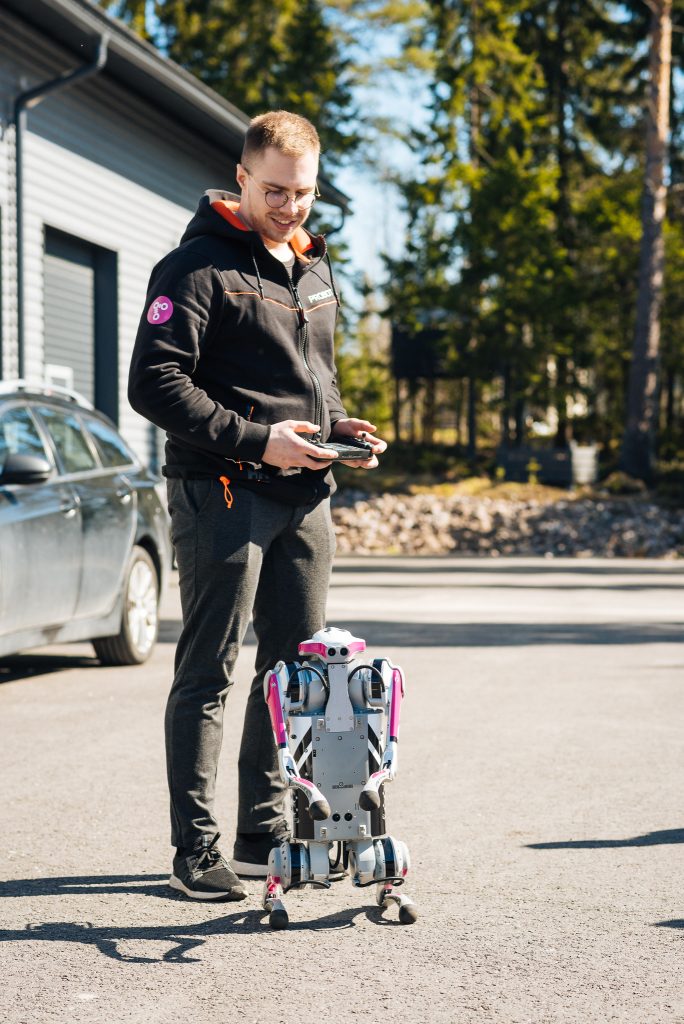
In addition to questions listed above, we have also received many other questions. If you didn’t find your question among the 10 most frequently asked questions about the robot dog, then by all means, keep reading.
11. Do You Need to Be Afraid of the Robot Dog? Are People Afraid of the Robot Dog in the Same Way as Real Dogs?
There is no need to be afraid of the robot dog. So far, no one has been seriously afraid of it – on the contrary. Although the robot dog does not have a soft fur or a wagging tail, it often causes an excited and affectionate reaction in people.
12. How Much Does the Robot Dog Weigh?
For example, the Unitree Go1 Pro robot dog weighs 12 kg. The handle on its back makes lifting the dog easier. Instead, the sturdier Unitree B1 weighs considerably more, around 50 kg. The weight, therefore, depends on the model of the robot dog.
13. What Does the Robot Dog Eat?
The robot dog’s favorite treats are screws. But seriously speaking, the robot dog eats nothing but the battery. It has no mouth.
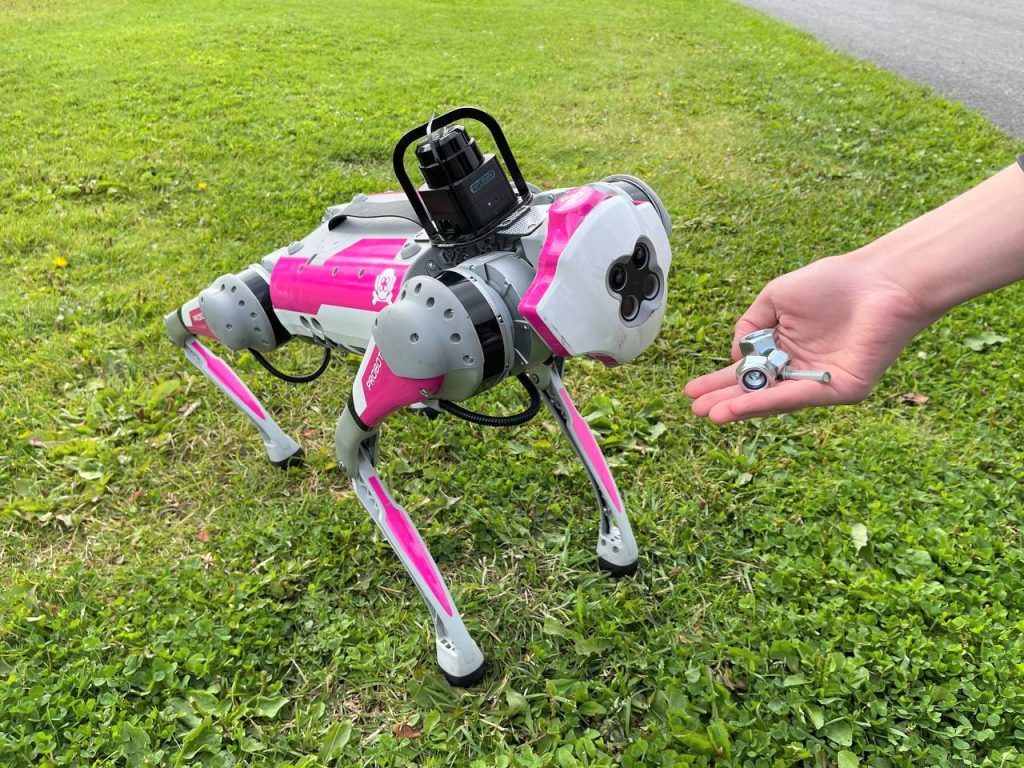
14. Is the Robot Dog Just a Toy?
Robot dogs are developed for both industrial and consumer use. So it’s not just a toy. Depending on the model, the robot dog can be a work and research tool for various tasks, but also a workmate or a pet.
15. Where Can You Buy Robot Dogs?
Currently, Probot Oy is the only distributor of Unitree’s robot dogs in Finland. If you are interested in purchasing a robot dog, feel free to contact us!
16. Where Can I Follow the Robot Dog?
Find the robot dog social media channels here. You can also find the robot dog on social media with the hashtag #BadProbotDog.
17. Do you want know more and check out the different models of robot dogs?
Read more information about the robot dog from our robot dog -page.
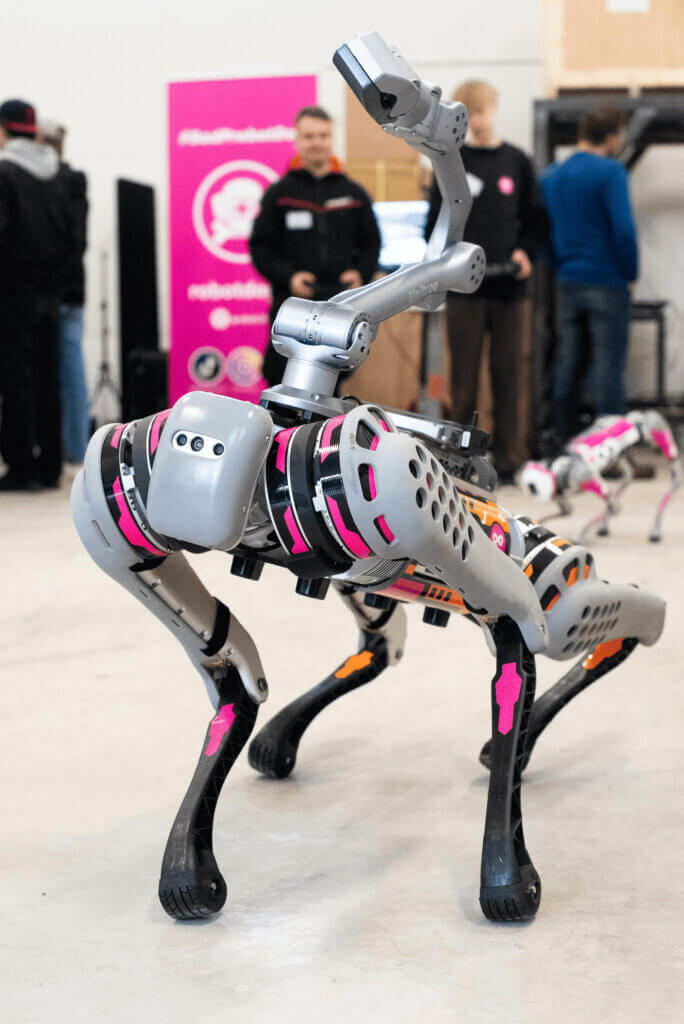
18. Do you still have questions?
No worries, you can always ask us more! Contact us, and we will help you as best as we can.
Are you fascinated by the world of robotics?
After reading about robot dogs do you feel like you would like to dive in deeper in the world of robotics? Maybe check out humanoid robots? You can read about our model here! If you are interested about more traditional but still agile moving robots then chekc out our mobile robot Dolly™ here!
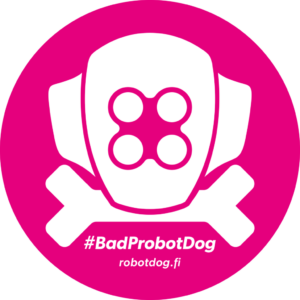
Probot Oy – Specialist in Robotics.

